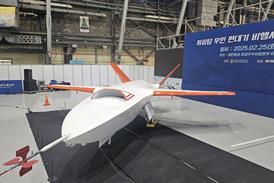Tim Furniss/LONDON
EVERYONE IS IMPRESSED by the SOHO's performance, says Roget Bonnet, the European Space Agency's (ESA) director of science. "By the end of the mission, we shall know the Sun far better than we do now," he adds. The SOHO (Solar and Heliospheric Observatory) is an ESA/NASA spacecraft, built by Europe's Matra Marconi Space and equipped with 11 scientific instruments, six of which involve UK scientists.
The spacecraft was launched by a Lockheed Martin Atlas 2AS booster from Cape Canaveral, Florida, on 2 December, 1995, and placed into a unique orbit around the Sun, about 1.5 million kilometres from the Earth, the Lagrangian Point, where the gravitational pull of the Earth and the Sun are equal. The SOHO can therefore continuously monitor the star Sunward of the Earth.
The accuracy of the Atlas launch and its arrival at the vantage point in space two weeks earlier than planned originally, left surplus on-board propellant, ensuring a possible mission life of 20 years, which will include periods of solar maximum activity, the next of which is due in 2000.
The SOHO provides comprehensive data about the Sun's interior, its corona (atmosphere) and the solar wind.
The craft's extreme ultra-violet-imaging telescope (EIT) has revealed the dynamics of the Sun in a detail not revealed by earlier spacecraft (see pictures), and "-amply justifies the creation of a Sun-gazing spacecraft capable of observing ultraviolet emissions which are blotted out by the Earth's atmosphere".
In addition to the EIT, two ultra-violet spectrometers, from Germany and the UK (Rutherford Appleton Laboratory, Mullard Space Science Laboratory, and UK universities), and ultra-violet and visible coronographs have analysed the violent processes at a wide range of wavelengths.
The instruments have seen the supposedly quiet Sun belching huge masses of gas into space - called coronal-mass ejections, which disturb the Solar System and can affect the Earth's own environment. "I believe that,for the first time, we can see the Sun preparing itself for a mass ejection," says Guenter Brueckner of the US Naval Research Laboratory, which developed the visible-light coronagraph, the LASCO.
"In the days preceding such an event, multiple magnetic loops appear on our images of the inner corona. They tell us that the Sun is re-organising its magnetic field. We want to confirm that this destabilises the solar atmosphere and causes the mass ejection. Then we should be able to give advance warning of outbursts which endanger low-flying satellites and can harm power distribution on the Earth," Brueckner says.
The Michelsen Doppler Imaging instrument, from Stanford University, California, has detected currents of gas flowing just below the visible surface. It observes 1 million points on the Sun's surface every minute and can detect subtle, short-range oscillations because of sound waves penetrating only a short distance into the Sun.
The Whole Sky Lyman Alpha Mapper (SWAN) mapped a hole burnt by the solar wind in a breeze of gas coming from stars. As a bonus, the SWAN has been used to track the Comet Hyakutake. "The solar wind was first discovered by studying comet tails," says Jean-Loup Bertaux, of the Service d'Astronomie, near Paris, which is responsible for the SWAN.o
The Sun's temperature levels range from (top to bottom) 2 million degreesC, 1.5 million degreesC, 1 million degreesC, to 80,000 degreesC
Source: Flight International























